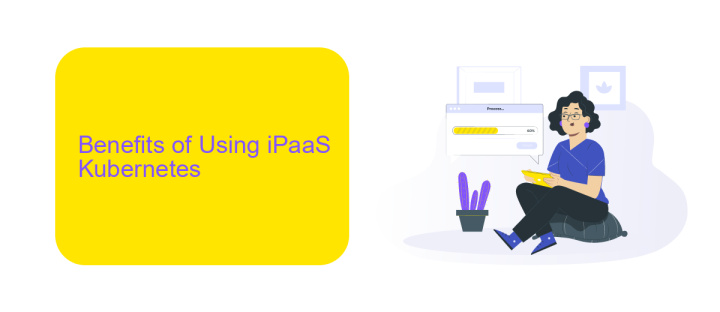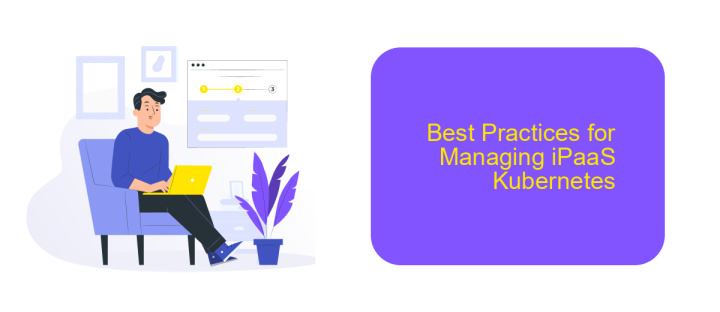iPaaS Kubernetes
In today's rapidly evolving technological landscape, businesses are increasingly turning to Integration Platform as a Service (iPaaS) and Kubernetes to streamline their operations and enhance scalability. iPaaS offers a seamless way to integrate various applications and data sources, while Kubernetes provides robust container orchestration. Together, they form a powerful duo, enabling enterprises to achieve greater efficiency and agility in their IT environments.
Introduction to iPaaS Kubernetes
iPaaS (Integration Platform as a Service) Kubernetes is revolutionizing the way businesses handle integrations and manage their cloud-native applications. By leveraging Kubernetes, iPaaS solutions can offer scalable, resilient, and automated integration capabilities. This combination ensures that organizations can seamlessly connect various services and applications, enhancing their operational efficiency.
- Scalability: Kubernetes enables iPaaS to scale resources dynamically based on demand.
- Resilience: With Kubernetes, iPaaS can automatically recover from failures, ensuring high availability.
- Automation: Kubernetes automates deployment, scaling, and management of containerized applications.
One notable service in this space is ApiX-Drive, which simplifies the process of setting up integrations between different platforms. ApiX-Drive provides a user-friendly interface and pre-built connectors, making it easier for businesses to automate workflows without extensive coding. By combining the power of iPaaS and Kubernetes, organizations can achieve seamless integrations and robust application management, paving the way for more efficient and reliable operations.
Benefits of Using iPaaS Kubernetes

Leveraging iPaaS Kubernetes offers numerous advantages for businesses aiming to streamline their operations. One of the primary benefits is the seamless integration of various applications and services, which significantly reduces the complexity of managing disparate systems. With platforms like ApiX-Drive, organizations can effortlessly connect multiple applications, automating workflows and ensuring data consistency across all integrated systems. This not only enhances operational efficiency but also allows IT teams to focus on more strategic tasks rather than troubleshooting integration issues.
Another significant benefit is the scalability and flexibility provided by Kubernetes. As businesses grow and their needs evolve, Kubernetes enables them to scale their iPaaS solutions effortlessly. This flexibility ensures that organizations can handle increased workloads without compromising performance. Additionally, Kubernetes' robust orchestration capabilities ensure high availability and reliability of services, minimizing downtime and enhancing overall system resilience. By combining the power of iPaaS with Kubernetes, businesses can achieve a more agile, responsive, and efficient IT infrastructure.
Getting Started with iPaaS Kubernetes

Getting started with iPaaS Kubernetes involves understanding the basics of both iPaaS (Integration Platform as a Service) and Kubernetes. iPaaS allows you to integrate various applications and services, while Kubernetes helps you manage containerized applications at scale. Together, they provide a powerful platform for seamless integration and orchestration.
- Set up your Kubernetes cluster. You can use managed Kubernetes services like GKE, EKS, or AKS for simplicity.
- Install an iPaaS solution that supports Kubernetes. ApiX-Drive is a great option for integrating various services and applications.
- Configure your integrations within the iPaaS platform. Use ApiX-Drive to connect your applications and automate workflows.
- Deploy your containerized applications on the Kubernetes cluster.
- Monitor and manage your integrations and applications using Kubernetes tools and ApiX-Drive's dashboard.
By following these steps, you can leverage the power of iPaaS Kubernetes to streamline your integration processes and manage your applications efficiently. ApiX-Drive simplifies the setup and configuration, allowing you to focus on building and scaling your applications.
Best Practices for Managing iPaaS Kubernetes

Managing iPaaS Kubernetes effectively requires a strategic approach to ensure seamless integration and optimal performance. The first step is to automate deployment processes using tools like Helm or Kubernetes Operators, which can help streamline the management of complex applications.
Another critical practice is to monitor and log all activities within your Kubernetes clusters. This helps in identifying issues early and maintaining high availability. Tools such as Prometheus and Grafana can provide valuable insights into the health and performance of your clusters.
- Automate deployments with Helm or Kubernetes Operators.
- Implement robust monitoring and logging using Prometheus and Grafana.
- Use ApiX-Drive for seamless integration of various services and applications.
- Regularly update and patch your Kubernetes clusters to avoid security vulnerabilities.
Lastly, ensure that your team is well-trained in Kubernetes best practices and iPaaS management. Continuous learning and adaptation are key to maintaining an efficient and secure environment. By following these best practices, you can optimize your iPaaS Kubernetes deployments and achieve greater operational efficiency.
Real-World Use Cases of iPaaS Kubernetes
One of the most compelling real-world use cases of iPaaS Kubernetes is the seamless integration of various cloud services and on-premises applications. For instance, companies can use iPaaS platforms like ApiX-Drive to connect disparate systems such as CRM, ERP, and marketing automation tools. By leveraging Kubernetes, these integrations can be dynamically scaled and managed, ensuring high availability and performance. This is particularly beneficial for businesses experiencing rapid growth or seasonal spikes in demand, as Kubernetes can automatically adjust resources to meet these changing needs.
Another practical application is in the realm of data synchronization and real-time analytics. Organizations can deploy iPaaS Kubernetes to facilitate continuous data flow between different data sources and analytics platforms. For example, ApiX-Drive can be used to automate the transfer of sales data from an e-commerce platform to a business intelligence tool, allowing for real-time insights and decision-making. This not only improves operational efficiency but also enables more accurate and timely business strategies.
FAQ
What is iPaaS?
How does Kubernetes fit into an iPaaS solution?
What are the benefits of using iPaaS with Kubernetes?
Can iPaaS be used for both cloud and on-premises applications?
How can I get started with automating integrations using iPaaS?
Do you want to achieve your goals in business, career and life faster and better? Do it with ApiX-Drive – a tool that will remove a significant part of the routine from workflows and free up additional time to achieve your goals. Test the capabilities of Apix-Drive for free – see for yourself the effectiveness of the tool.

